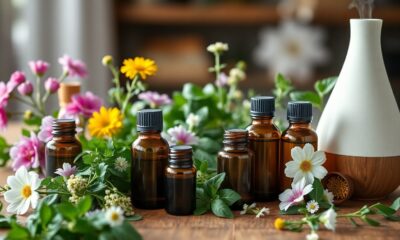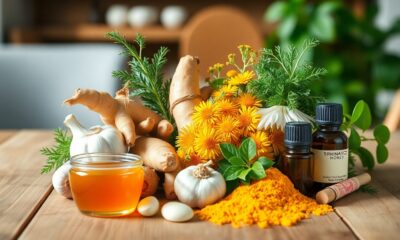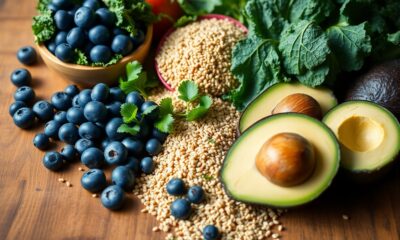Health & Society
Baby gorilla found at airport recovers, even gains weight in Istanbul

A 5-month-old gorilla was rescued from the cargo hold of a plane and is now recovering at a zoo in Istanbul as wildlife officials consider returning it to its natural habitat. The gorilla was found last month in a crate on a Turkish Airlines flight from Nigeria to Thailand, CBS News reported in January. After a public competition, he was named Zeytin, which means olive, and is recovering.
Zeytin Gains Weight
Weeks after being found at the airport, Zeytin has gained weight and is showing signs of recovery from his traumatic journey.
“When he first came, he was very shy, he would stay where we left him,” said veterinarian Gulfem Esmen. “Now he doesn’t have that shyness. He doesn’t even care much about us. He plays games by himself.”
Of course, what we want and desire is for the baby gorilla … to continue his life in his homeland,” Fahrettin Oulu, Istanbul’s regional director for nature conservation and national parks, said on Sunday.
“The important thing is that an absolutely safe environment is created wherever he goes,” he added.
Illegal trade appears to pass through Istanbul
As Istanbul becomes a major air hub between continents, customs officials are increasingly catching illegally traded animals. In October, 17 young Nile crocodiles and 10 monitor lizards were found in the luggage of an Egyptian passenger at the city’s Sabiha Gokcen Airport.
Illustrative Photo by Andrea Acanfora: https://www.pexels.com/photo/close-up-photo-of-an-infant-gorilla-7268737/
Health & Society
Exploring The Healing Power Of Essential Oils – A Beginner’s Guide
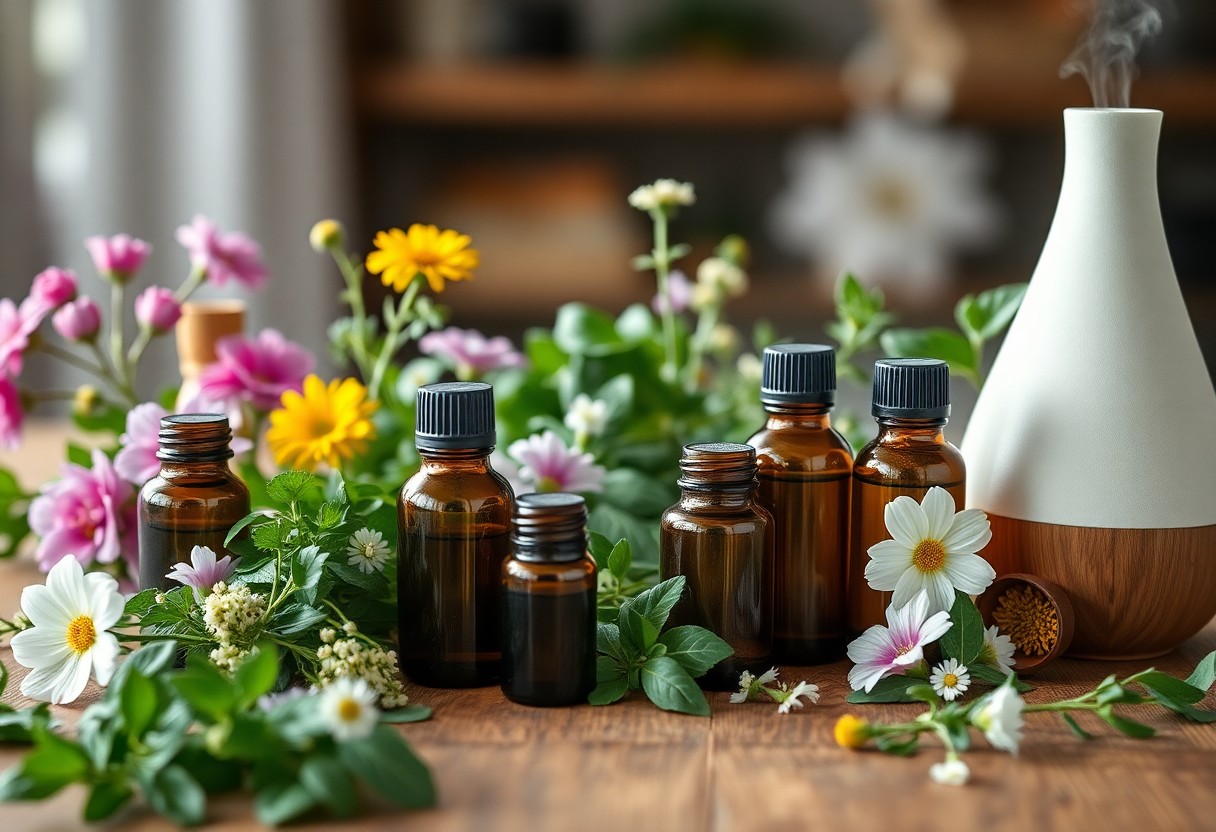
You may be surprised to learn that crucial oils offer a wealth of therapeutic benefits and can play a significant role in enhancing overall well-being. In this informative guide, he or she will discover how these potent extracts can effectively address various health concerns, from stress relief to improved sleep quality. It is vital to understand that while crucial oils can be beneficial, proper usage and safety guidelines should always be adhered to. By delving into the world of crucial oils, they will uncover the secrets to unlocking nature’s healing power in their everyday lives.
Key Takeaways:
- Essential oils can be used for a variety of therapeutic purposes, including stress relief, improved sleep, and enhanced mood.
- Understanding the different extraction methods and types of crucial oils is important for selecting high-quality products.
- Safety is key—always dilute crucial oils with a carrier oil before topical application and conduct patch tests to avoid skin reactions.
- Different oils have unique properties; for example, lavender is known for relaxation, while tea tree oil is often used for its antibacterial effects.
- Aromatherapy can be effectively practiced at home using diffusers, inhalation techniques, or incorporating oils into baths and massages.
Understanding Essential Oils
Before venturing into the world of aromatherapy, it is vital to have a clear understanding of what vital oils are and how they can enhance well-being. These concentrated extracts from plants contain potent aromatic compounds that provide various therapeutic benefits. Each vital oil possesses unique properties, making them versatile allies in promoting emotional and physical health.
What are Essential Oils?
By definition, vital oils are natural, highly concentrated plant extracts that capture the distinctive fragrance and medicinal properties of the botanicals from which they originate. They are used for various applications, including aromatherapy, topical treatments, and more.
How Essential Oils are Extracted
At their core, vital oils are derived through various extraction methods, primarily steam distillation and cold pressing. These processes allow the preservation of the powerful compounds within the plant materials, ensuring the purity of the final product.
In fact, steam distillation involves passing steam through plant materials to extract the vital oils, while cold pressing is primarily used for citrus fruits, where the outer peel is mechanically pressed to release the oils. It’s important to note that not all extraction methods yield the same quality; methods like solvent extraction can leave harmful residues, making it vital to source oils that are 100% pure. Moreover, understanding the extraction process is vital since some methods may compromise the integrity of the oil, impacting its overall therapeutic properties and effectiveness.
The Science Behind Aromatherapy
Assuming he or she is curious about the fundamentals of aromatherapy, it is crucial to understand the interaction between crucial oils and the human body. Aromatherapy harnesses concentrated plant extracts to enhance physical and emotional well-being. Scientific studies have indicated that these oils can affect the limbic system, which governs emotions and memories, thereby influencing mood and health.
How Essential Oils Affect the Brain
Against common misconceptions, crucial oils do more than just smell pleasant; they can elicit profound responses in the brain. Research has shown that when inhaled, these oils interact with the olfactory system, sending signals directly to the limbic system, which is responsible for emotional regulation and memory. This connection explains why specific scents can trigger powerful emotional or physical responses.
The Role of Scent in Healing
Brain scientists have discovered that scents can evoke strong emotional reactions and memories, making them an crucial tool in holistic healing. At a physiological level, inhaling certain crucial oils can lead to decreased cortisol levels, promoting relaxation and alleviating stress. Moreover, particular scents, such as lavender and chamomile, are known to enhance sleep quality and reduce anxiety. This connection between smell and emotional well-being highlights the importance of incorporating crucial oils into daily routines as a natural way to support mental health and create a calming environment.
Common Essential Oils and Their Uses
Unlike synthetic fragrances, vital oils offer a variety of therapeutic benefits derived from natural plant extracts. Each oil possesses unique properties that can support physical and emotional well-being. For beginners, getting acquainted with common vital oils like lavender, peppermint, and eucalyptus is a great starting point to explore aromatherapy and its myriad applications.
Lavender for Relaxation
Around bedtime, many individuals turn to lavender oil for its highly regarded calming effects. This vital oil is often used in diffusers or added to nighttime routines, as it promotes tranquility and restful sleep. Its soothing aroma can ease anxiety and stress, making it an ideal companion for relaxation practices.
Peppermint for Energy
With its invigorating scent, peppermint oil is popular among those seeking a natural energy boost. This vital oil is often diffused or applied topically to enhance focus and alertness, helping to combat feelings of fatigue. Its refreshing properties make it a go-to oil for anyone needing a pick-me-up during the day.
In addition to providing an energy boost, peppermint oil has various therapeutic properties. It is known to promote mental clarity and concentration, making it beneficial for those needing to stay focused. Moreover, the oil can aid in alleviating headaches and providing relief from sinus congestion. However, users should be cautious as peppermint oil can be irritating to sensitive skin and needs to be diluted before topical application. By harnessing the power of peppermint oil, individuals can enhance their productivity and vitality safely.
How to Use Essential Oils Safely
Keep in mind that necessary oils are potent substances that require careful handling. To ensure safe usage, individuals should always perform patch tests before applying new oils directly to the skin, and they should seek guidance on safe dosage and dilution practices. By prioritizing safety, users will minimize the risk of adverse reactions and enhance their overall experience with necessary oils.
Dilution and Application Methods
Across various application methods, necessary oils should be diluted properly to reduce potential skin irritation. Common carrier oils such as jojoba, sweet almond, or coconut oil can effectively serve this purpose. Standard dilution ratios recommend mixing one to three drops of necessary oil with a teaspoon of carrier oil, depending on the intended use, which allows for safe topical application or use in aromatherapy diffusers.
Potential Allergies and Side Effects
Dilution is necessary, but individuals should also be aware of potential allergies and side effects that may arise from necessary oils. Some may experience skin irritations, allergic reactions, or sensitivity when using specific oils, making patch testing vital. Seeking advice from a healthcare professional before beginning any necessary oil regimen can help he, she, or they avoid any negative experiences.
Understanding the risks associated with necessary oils is key to safe usage. Individuals may experience a range of allergic reactions, from mild skin irritations to more severe effects like respiratory distress in sensitive individuals. It’s necessary for they to recognize common allergens such as eucalyptus and lavender, which may trigger negative responses. Additionally, certain necessary oils are photosensitive, especially citrus oils, increasing the risk of sunburn when applied before sun exposure. For a positive and safe experience, a small group should always consult a healthcare provider and monitor their reactions closely when incorporating new oils into their routine.
Creating Your Essential Oil Blends
Many enthusiasts find that creating their own imperative oil blends allows for a personalized experience that caters to individual needs. By experimenting with various combinations, they can explore unique scents and therapeutic properties to enhance their well-being. This process not only promotes creativity but also empowers them to discover the perfect blend that resonates with their preferences.
Choosing the Right Oils
Across the vast array of imperative oils available, selecting the right ones for a blend can be overwhelming. To navigate this, individuals often consider the desired benefits, such as relaxation or invigorating effects, while also taking into account their personal scent preferences. Researching each oil’s properties enables them to create harmonious and effective combinations.
Blending Techniques
Among the several methods to combine imperative oils, understanding blending techniques can significantly enhance the blending experience. Simple methods like the drop-by-drop technique allows for precise control while more advanced techniques like layering and diluting oils offer various depth and complexity to the blends.
Oils can be combined through a few straightforward techniques. For instance, the drop-by-drop method involves adding single drops of each imperative oil to a blending bottle, which can then be adjusted as needed. Layering involves first adding heavier imperative oils followed by lighter ones, ensuring a balanced aroma. Furthermore, using a carrier oil is imperative to dilute stronger oils, preventing any potential skin irritation. By considering dilution ratios and allowing blends to sit for a day, they ensure that the final product is well-rounded and harmonious.
Incorporating Essential Oils into Daily Life
Once again, vital oils can be seamlessly integrated into everyday routines, enhancing well-being in various facets of life. Whether for relaxation, stimulation, or personal care, incorporating these potent oils offers numerous benefits. She can add a few drops to her laundry, he can use them in his skincare regimen, or they can simply enjoy the aromatic experience during daily tasks. With customization possibilities, vital oils can adapt to individual preferences and lifestyles, making them a versatile addition to living a holistic life.
Diffusers and Aromatherapy
Oils can be effectively dispersed into the air using diffusers, creating an enchanting atmosphere that promotes mental clarity and emotional balance. Essential oils like lavender and eucalyptus are popular choices as they can evoke calmness and boost respiratory health. By diffusing these oils throughout the day, he, she, or they can experience their therapeutic effects while enjoying the delightful scents that elevate any space.
Bath and Body Applications
Among the various ways to incorporate vital oils, bath and body applications stand out as particularly enjoyable and beneficial. Essential oils can transform a simple bath into a rejuvenating experience, with options ranging from soothing lavender for relaxation to invigorating orange for energy. They can also be added to lotions or carrier oils for massages, enhancing skin health and providing therapeutic effects that help minimize stress and tension.
Another appealing method is the addition of vital oils to bath products, where the right combination can create a soothing environment. Using oils like tea tree for its antibacterial properties or chamomile to calm the mind enhances the bath experience. It’s vital for them to use a carrier oil, such as coconut or jojoba, to prevent skin irritation, as some oils can be strongly concentrated. By blending these oils with their favorite moisturizers, they can enjoy positively transformative effects on the skin while indulging in delightful scents that promote mental well-being.
Conclusion
Following this beginner’s guide, individuals can appreciate the remarkable healing properties of important oils. By understanding their various applications and benefits, he or she can harness these natural remedies to enhance well-being. Additionally, they may discover how important oils can complement their health routines, offering support for physical and emotional challenges alike. As they explore the world of aromatherapy, he, she, and they will be equipped to make informed choices that resonate with their personal wellness journeys.
FAQ
Q: What are necessary oils and how are they extracted?
A: Essential oils are concentrated plant extracts that capture the natural fragrance and beneficial properties of the plant. They are typically extracted through methods such as steam distillation, cold pressing, or solvent extraction. Each method varies based on the plant type and desired oil quality. This process ensures that the essence of the plant is encapsulated in the oil, allowing for various therapeutic benefits.
Q: What are the common uses of necessary oils in healing?
A: Essential oils can be utilized in various ways for healing purposes, including aromatherapy, topical application, and even ingestion in some cases. They can be used to alleviate stress and anxiety, promote better sleep, boost mood, enhance immune function, and aid in pain relief. Additionally, some oils have antiseptic properties, making them useful in skincare and wound care.
Q: Are there any safety precautions to take when using necessary oils?
A: Yes, it is important to follow safety guidelines when using necessary oils. Always dilute necessary oils with a carrier oil, such as coconut or jojoba oil, before applying them to the skin. Conduct a patch test to check for any skin sensitivities. Some oils are not recommended for children, pregnant women, or individuals with certain medical conditions, so consulting with a healthcare professional is advisable prior to use.
Q: How can I incorporate necessary oils into my daily routine?
A: Incorporating necessary oils into your daily routine can be simple and enjoyable. You can use an necessary oil diffuser to fill your space with uplifting scents or add a few drops of your favorite oil to your bath for a relaxing soak. Using necessary oils in homemade cleaning products or skin care routines is another great way to reap their benefits. Additionally, you can create personalized roller blends for on-the-go application to support emotional wellness.
Q: Where can I purchase high-quality necessary oils?
A: High-quality necessary oils can be purchased from various sources, including health food stores, specialty shops, and online retailers. It is necessary to look for brands that provide pure, therapeutic-grade oils without synthetic additives. Reading reviews, checking for third-party testing, and ensuring the oils are sourced responsibly will help you find reputable products to use in your wellness journey.
Health & Society
Nature’s Antibiotics – Top Natural Alternatives To Fight Infections
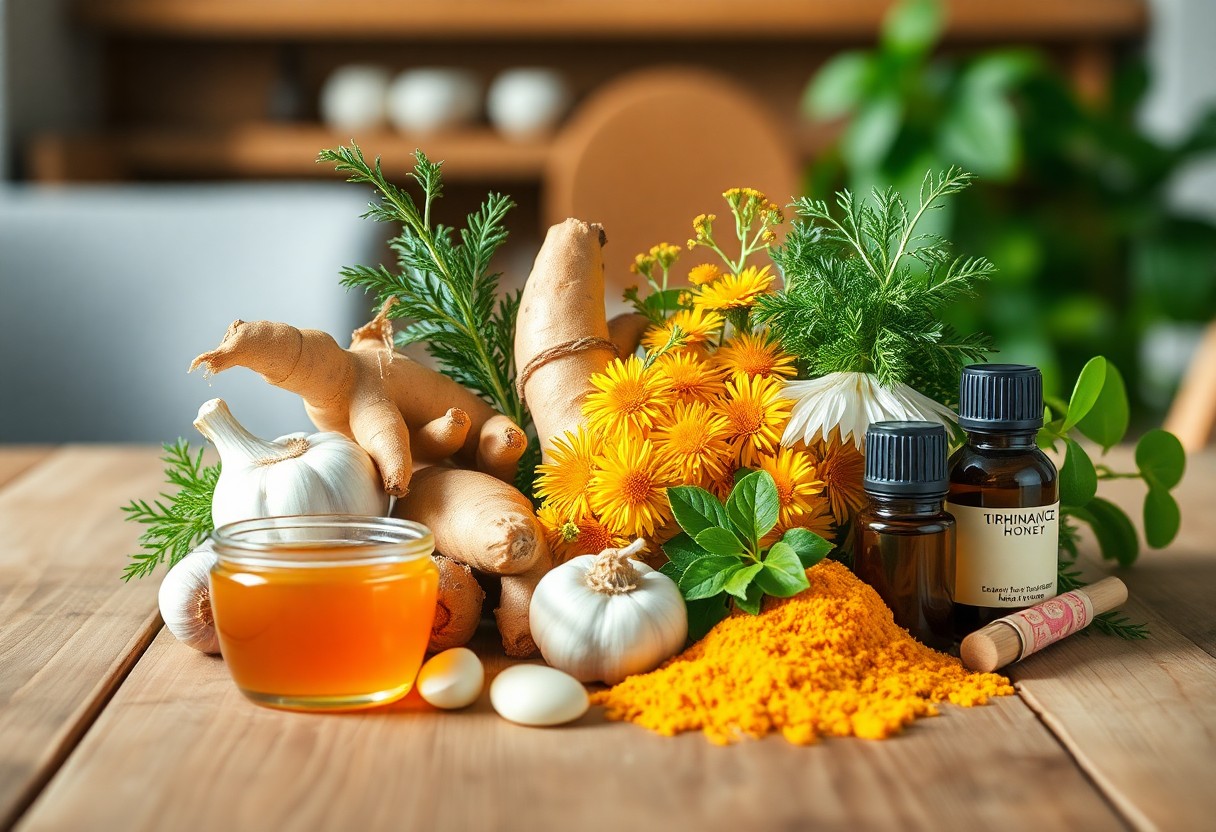
Natural remedies have been utilized for centuries to combat various infections, and he or she should be aware that these nature’s antibiotics can be effective alternatives to conventional medications. They may provide powerful antibacterial properties and often come with fewer side effects. This blog post explores the top natural alternatives that he or she can consider to fight infections while supporting their overall health. By understanding these options, they can make informed choices about their wellness journey.
Key Takeaways:
- Natural antibiotics like garlic, honey, and ginger possess antimicrobial properties that can help combat infections.
- Probiotics, found in yogurt and fermented foods, support gut health and enhance the immune response against pathogens.
- Essential oils, such as oregano and tea tree oil, exhibit strong antibacterial effects and can be used topically or aromatically.
- Certain herbs like turmeric and echinacea have been used for centuries in traditional medicine to prevent and treat infections.
- Maintaining a healthy lifestyle, including a balanced diet and regular exercise, can boost the body’s natural defenses against infections.
Understanding the Role of Antibiotics
While antibiotics have been a revolutionary tool in modern medicine, they are not without their complexities. These medications work by targeting bacterial infections, effectively inhibiting their growth or killing them outright. Healers and healthcare professionals often rely on antibiotics to treat a range of illnesses, but their potency comes with usage considerations that demand careful awareness and management.
Traditional Antibiotics
Behind the development of traditional antibiotics lies a rich history of scientific discovery, with pioneers like Alexander Fleming bringing forth penicillin. These synthetic or naturally-derived substances have played a vital role in combatting bacterial infections, saving countless lives through targeted treatment. However, their widespread use has raised concerns over long-term effectiveness and potential side effects.
The Rise of Antibiotic Resistance
Along with their benefits, antibiotics have led to a significant rise in antibiotic resistance, a major global health challenge. Bacteria adapt and evolve, rendering some antibiotics ineffective, which in turn complicates medical treatments and increases recovery times.
Plus, antibiotic resistance has been exacerbated by over-prescription, inappropriate usage, and lack of adherence to treatment protocols. This alarming trend means that common infections can become life-threatening as previously treatable diseases acquire resistance. The World Health Organization has warned that the rise of resistant bacteria could lead to a post-antibiotic era, wherein minor surgeries and routine procedures could carry increased risks of infections. As they navigate these challenges, healthcare providers emphasize the need for responsible antibiotic use and greater research into alternatives.
Natural Antibiotics: An Overview
Even in a time dominated by pharmaceutical solutions, natural antibiotics continue to garner interest for their potential benefits. These substances, derived from plants, herbs, and other natural sources, have been utilized for centuries to combat infections. As more people seek holistic alternatives, understanding how these natural options work provides insight into their effectiveness against harmful bacteria.
Definition and Benefits
Definition: Natural antibiotics are compounds found in nature that possess the ability to inhibit bacterial growth and infections. Their benefits include fewer side effects, a lower risk of antibiotic resistance, and additional health-promoting properties, such as anti-inflammatory and immune-boosting effects.
Historical Uses in Medicine
Antibiotics have a rich history in traditional medicine, with various cultures relying on natural remedies long before synthetic drugs were developed. They have been used in herbal teas, poultices, and tinctures across different civilizations to treat wounds and infections. Garlic, for example, was revered in ancient Egypt for its antimicrobial properties, while honey has been utilized for centuries for its ability to promote healing and prevent infection. Plus, indigenous peoples often harnessed local flora as potent remedies, paving the way for modern pharmacology to explore these natural alternatives further.
Top Natural Antibiotics
Once again, nature provides an array of powerful antibiotics that can help combat infections effectively. These natural alternatives are widely utilized for their antimicrobial properties, offering a safer approach to healing without the side effects commonly associated with conventional antibiotics. By incorporating these natural remedies, one can not only support their health but also enhance their body’s ability to fight off infections.
Garlic
Between its rich flavor and numerous health benefits, garlic stands out for its potent antibacterial properties. It contains allicin, a compound that exhibits strong activity against various bacteria, making it a valuable ally in fighting infections.
Honey
Among the most revered natural remedies, honey possesses remarkable healing qualities. Its natural antibacterial and wound-healing properties make it a superb choice for treating ailments like coughs, sore throats, and cuts.
Plus, the high sugar content in honey creates an inhospitable environment for bacteria, limiting their growth. Furthermore, its antioxidant properties aid in reducing inflammation and supporting overall health. Regular consumption of honey can potentially enhance one’s immunity and expedite the healing process, making it a delightful and beneficial addition to any health regimen.
Ginger
Among the various herbs and spices known for their medicinal properties, ginger stands out for its remarkable ability to combat infections. Its natural compounds, such as gingerol and shogaol, have demonstrated strong antimicrobial effects.
But, ginger also has potent anti-inflammatory and antioxidant effects that can alleviate symptoms of infections. It supports the immune system by promoting circulation and increasing white blood cell activity, which helps to ward off pathogens. Including ginger in one’s diet, whether as a tea or in meals, can bolster overall health and fight off infections more effectively.
Turmeric
Any discussion of natural antibiotics would be incomplete without mentioning turmeric. This vibrant spice contains curcumin, known for its powerful antimicrobial and anti-inflammatory properties, making it a strong contender against various pathogens.
Natural research supports its use in promoting health and preventing infection. Turmeric is commonly used in traditional medicine as a remedy for conditions ranging from minor ailments to chronic diseases. Incorporating turmeric into meals or taking it as a supplement can enhance one’s immunity while providing long-term health benefits.
Oregano Oil
Below the surface of many kitchen cabinets lies oregano oil, a powerful natural antibiotic. Rich in carvacrol and thymol, oregano oil offers potent bactericidal properties that can support the body’s defenses against harmful bacteria.
Hence, oregano oil can be particularly effective when used in its pure, concentrated form, making it a popular choice for herbalists and natural health enthusiasts. By incorporating oregano oil into their health routine, individuals may find an effective tool in their fight against infections, enhancing their overall wellness while minimizing dependency on synthetic drugs.
How to Incorporate Natural Antibiotics
Many individuals are seeking ways to incorporate natural antibiotics into their daily routines to enhance their immune system and overall health. They can easily introduce herbs like garlic, ginger, and turmeric into their meals, or opt for herbal teas and tinctures. Additionally, using honey as a natural sweetener can add beneficial properties while promoting healing. Maintaining a balanced diet rich in these natural alternatives allows them to combat infections effectively and support their body’s innate defenses.
Dosage and Preparation
An effective approach to the use of natural antibiotics involves understanding proper dosage and preparation methods. For instance, she may add minced garlic to her dishes or consume ginger tea to harness their antibacterial properties. They should also consider using necessary oils with caution, ensuring they are diluted before application. Preparing these natural remedies consistently and mindfully can help maximize their benefits.
Safety and Considerations
Behind the appeal of natural antibiotics lies the importance of safety and consideration. They should always consult with a healthcare professional before starting any new regimen, especially if they are pregnant, nursing, or taking prescription medications. Individual reactions to natural substances can vary, making awareness of potential allergies and interactions necessary.
Further, he or she should be aware that while natural antibiotics can provide health benefits, they do not replace conventional treatments when serious infections arise. Some natural options might interact negatively with other medications, leading to serious side effects. It’s vital for them to ensure that these remedies are used alongside proper medical guidance, as overuse can lead to reduced effectiveness over time. Overall, a balanced approach will yield the finest results while safeguarding their well-being.
Efficacy of Natural Alternatives
Not all natural alternatives are equally effective against infections. While various plants and substances have shown promise, their potency can vary based on individual circumstances, dosage, and method of use. It is crucial for individuals to consider these factors when exploring natural remedies as an adjunct or alternative to conventional antibiotics.
Research and Studies
Research has indicated that several natural substances exhibit antibacterial properties. Studies have demonstrated that ingredients such as garlic, honey, and turmeric possess compounds that can inhibit bacterial growth. However, more comprehensive clinical trials are required to fully understand their efficacy and potential applications in treating infections.
Anecdotal Evidence
Evidence from personal testimonies and experiences suggests that many individuals have found relief from infections using natural remedies. Individuals often report using garlic for its antimicrobial effects or honey for its wound-healing properties, underscoring the belief in the power of these natural alternatives.
Another important aspect of anecdotal evidence is that it reveals a wide array of personal experiences, with many sharing success stories of using natural remedies to combat infections. However, it is crucial to approach these claims with caution, as individual results can vary significantly. While some might experience remarkable improvements in their condition, others might not see the same effects. Overlooking the potential for allergic reactions or interactions with other medications can also lead to serious consequences, making it imperative for each person to consult a healthcare professional before relying solely on anecdotal evidence for treatment.
Future of Natural Antibiotics
For those intrigued by emerging health trends, the future of natural antibiotics appears promising. As research in phytotherapy progresses, scientists continue to explore the efficacy of various plant-based compounds. These developments may provide potent solutions in combating antibiotic resistance, tailoring treatments for a myriad of infections while minimizing side effects. The shift towards holistic healthcare suggests an increased interest in integrating these natural alternatives into mainstream medical practices.
Potential Developments
Against the backdrop of rising antibiotic resistance, ongoing research is aiming to uncover new natural compounds with antimicrobial properties. Advances in technology are enabling scientists to isolate and better understand these substances found in herbs, spices, and other plants. This approach can lead to the discovery of innovative treatments that may complement existing antibiotics or serve as standalone alternatives, potentially transforming how infections are managed.
Integrating with Conventional Medicine
By combining natural antibiotics with conventional medicine, healthcare providers can enhance patient outcomes through a more comprehensive approach. This integration ensures that patients benefit from the synergistic effects of both treatment modalities. Natural substances may also provide supportive therapies to mitigate the side effects associated with conventional antibiotics. Moreover, they could fulfill critical roles in preventing recurrence, allowing practitioners to address underlying issues while minimizing potential harm.
The integration of natural antibiotics into conventional medicine signifies a shift towards a more holistic healthcare approach. The collaboration between traditional and alternative practices can harness the full potential of both worlds. By recognizing the value of natural substances, healthcare providers can offer supplementary treatments that enhance the patient’s immune response, diminish side effects, and potentially reduce reliance on synthetic antibiotics. This synergistic model may not only lead to improved clinical outcomes but also pave the way for a more sustainable healthcare system.
Summing up
Conclusively, individuals seeking natural alternatives to combat infections can explore various options offered by nature’s antibiotics. They may find benefits in substances like garlic, honey, and ginger, each possessing unique antibacterial properties. By integrating these natural remedies into their health routines, they can support their immune systems and promote overall wellness. However, it remains vital for them to consult healthcare professionals before replacing conventional treatments with these alternatives, ensuring they make informed decisions regarding their health.
FAQ
Q: What are Nature’s Antibiotics?
A: Nature’s antibiotics refer to natural substances that possess antibacterial properties and can help fight infections. These include herbs, spices, and other plant-derived compounds known for their ability to combat pathogens without the side effects often associated with conventional antibiotics. Examples include garlic, honey, ginger, and oregano oil.
Q: How do natural antibiotics compare to synthetic antibiotics?
A: While synthetic antibiotics are designed to target specific bacteria, natural antibiotics often have a broader spectrum of action, affecting multiple types of pathogens. Additionally, natural antibiotics tend to work by enhancing the immune system and promoting overall health, rather than solely targeting bacteria. However, they may not be as potent for severe infections and should not replace conventional antibiotics when prescribed by a healthcare professional.
Q: Are there any side effects from using natural antibiotics?
A: Generally, natural antibiotics are considered safe for most people when used appropriately. However, some individuals may experience allergic reactions or interactions with medications. It’s important to consult a healthcare provider before incorporating them into your regimen, especially if you have underlying health conditions or are taking other medications.
Q: Which natural antibiotics are most effective for common infections?
A: Some of the most effective natural antibiotics for common infections include garlic, which has potent antibacterial properties; honey, known for its wound healing effects; oregano oil, effective against various bacterial strains; and turmeric, which has anti-inflammatory and antibacterial qualities. Each of these has specific applications and efficacy depending on the type of infection.
Q: How can I incorporate natural antibiotics into my daily routine?
A: There are several ways to integrate natural antibiotics into your diet and lifestyle. For instance, you can add raw garlic and honey to salads or teas, use turmeric and ginger in cooking, and incorporate oregano oil into marinades. Additionally, drinking herbal teas made from echinacea or elderberry can be beneficial. However, it’s advisable to start with small amounts to gauge your body’s response and consult with a healthcare professional for personalized recommendations.
Health & Society
Creating A Balanced Lifestyle – Tips For Achieving Natural Wellness Every Day

Just as a well-tuned instrument creates beautiful music, a balanced lifestyle allows individuals to achieve natural wellness daily. He, she, and they must understand that harmony in life can result from simple adjustments in routine, nutrition, and mental health practices. By prioritizing self-care and engaging in activities that promote emotional stability, they can significantly enhance their overall well-being. This blog post offers insightful tips that empower individuals to take charge of their health and create sustainable habits for lasting wellness.
Key Takeaways:
- Establish a consistent daily routine that incorporates physical activity, healthy eating, and mindfulness practices to promote overall wellbeing.
- Prioritize quality sleep by creating a restful environment and adhering to a sleep schedule to support natural recovery and restore energy levels.
- Incorporate stress management techniques, such as meditation, yoga, or journaling, to enhance emotional health and resilience.
- Stay hydrated and consume a balanced diet rich in fruits, vegetables, lean proteins, and whole grains to fuel your body effectively.
- Make time for social connections and engaging activities that bring joy, as strong relationships and hobbies can significantly improve quality of life.
Understanding Natural Wellness
A concept rooted in the harmonious interaction between the body, mind, and spirit, natural wellness emphasizes the importance of holistic health practices. It encourages individuals to cultivate a lifestyle that prioritizes well-being through organic food choices, mindfulness, physical activity, and emotional stability. By harnessing the power of nature and self-awareness, a person can foster resilience against stress and enhance their overall quality of life.
The Concept of Balance
With a balanced lifestyle, individuals can synchronize their physical, emotional, and spiritual needs. Achieving this equilibrium often involves cultivating healthy habits and routines, enabling them to navigate daily challenges more effectively. Embracing this synergy leads to improved vitality and reduces the risk of burnout.
Benefits of a Balanced Lifestyle
Natural wellness provides a multitude of benefits that significantly enhance one’s quality of life.
In fact, she can experience heightened energy levels, improved mental clarity, and better emotional regulation. By prioritizing a balanced lifestyle, they also reduce the risk of developing chronic illnesses and promote longevity. Furthermore, a focus on wellness fosters stronger relationships, as individuals tend to be more present and engaged. As they embrace such a lifestyle, they are likely to find themselves more adaptable and resilient in the face of life’s challenges, ultimately leading to greater happiness and fulfillment.
Nutrition for Wellness
Any individual seeking to achieve a balanced lifestyle must prioritize nutrition as a foundational element. A diet rich in natural, nourishing foods contributes significantly to overall wellness, enhancing both physical health and mental clarity. By incorporating a variety of wholesome ingredients, they can fuel their bodies and promote long-term vitality.
Importance of Whole Foods
With an emphasis on whole foods, individuals can maximize their nutrient intake while minimizing harmful additives and preservatives found in highly processed products. Whole foods such as fruits, vegetables, whole grains, and lean proteins provide important vitamins, minerals, and antioxidants that support optimal bodily functions and overall health.
Meal Planning and Preparation
Across various lifestyles, effective meal planning and preparation serve as powerful tools for maintaining a healthy diet. By dedicating time to strategize meals and prep ingredients in advance, individuals can ensure they have easy access to nutritious options, reducing the likelihood of unhealthy choices during busy periods.
Consequently, meal planning encourages intentional eating habits that can foster better physical and mental health. They can prepare balanced recipes that feature a mix of proteins, healthy fats, and complex carbohydrates, ensuring they receive a variety of nutrients. Furthermore, creating a weekly menu and shopping list helps streamline grocery shopping, avoiding the pitfalls of impulsive buying. By focusing on batch cooking and using versatile ingredients, individuals can save time while also minimizing food waste, ultimately leading to a sustainable, nourishing lifestyle.
Physical Activity and Exercise
For anyone aiming to achieve natural wellness every day, physical activity and exercise play a pivotal role. Engaging in a variety of physical activities not only enhances physical health but also contributes to mental well-being. Prioritizing regular movement helps to improve mood, increase energy levels, and maintain a healthy body weight, all of which are necessary components for a balanced lifestyle.
Finding the Right Exercise for You
About discovering the right type of exercise for oneself involves understanding personal preferences and fitness levels. He or she should explore various activities—such as swimming, cycling, yoga, or dancing—to identify what brings joy and motivates them to stay active. It’s important for them to select exercises that align with their interests, as this will lead to a more sustainable and enjoyable fitness journey.
Incorporating Movement into Daily Life
Between structured workouts and spontaneous activities, there are numerous ways for individuals to incorporate movement into their daily routines. Simple changes to their day can make a significant impact on overall physical health.
Finding ways to integrate movement into everyday life can serve to enhance well-being and promote a balanced lifestyle. He or she might consider options like taking the stairs instead of the elevator, walking or biking to nearby locations instead of driving, or even standing while working. Aiming for brief, frequent periods of activity throughout the day—whether it’s stretching, walking, or performing bodyweight exercises—can lead to an increase in overall fitness levels. Not only does this create consistent movement, but it also fosters a sense of accomplishment and boosts energy levels, aiding them in maintaining a healthier, more balanced lifestyle.
Mental and Emotional Well-being
Keep in mind that cultivating mental and emotional well-being is necessary for a balanced lifestyle. By addressing their emotional health and practicing self-care, individuals can enhance their overall quality of life. They should prioritize activities that promote joy and connection, creating a stable foundation for both their personal and professional challenges.
Practices for Stress Management
Management of stress is vital for maintaining emotional well-being. Individuals can engage in various techniques such as time management, setting realistic goals, and establish boundaries, all of which help mitigate stress levels. By creating a structured plan, they allow themselves room to breathe and reassert control over their day-to-day lives.
Mindfulness and Meditation Techniques
Emotional stability thrives on the use of mindfulness and meditation techniques. These practices assist individuals in grounding themselves and fostering a deeper connection to the present moment. They enable people to observe their thoughts without judgment, leading to a greater awareness of their emotions and reducing feelings of anxiety and depression.
With mindfulness and meditation, individuals can experience transformational benefits. Engaging in these practices regularly helps to foster emotional resilience and a profound sense of inner peace. By dedicating time each day to sit quietly and focus on their breath, they can achieve greater clarity in thoughts and cultivate a more positive outlook on life. Over time, these techniques can lead to remarkable improvements in stress management, emotional balance, and overall well-being.
Quality Sleep and Rest
Your body and mind require quality sleep to rejuvenate and function optimally. Establishing healthy sleep habits ensures better physical health, emotional well-being, and cognitive performance. By prioritizing rest, individuals can create a balanced lifestyle that promotes natural wellness every day.
Importance of Sleep Hygiene
On maintaining healthy sleep hygiene significantly impacts overall well-being. It involves creating an environment and routine that encourages restorative sleep. Adequate sleep hygiene enhances both sleep quality and the ability to wake up refreshed and ready to tackle the day.
Tips for Better Sleep
One way to enhance sleep quality is by implementing effective strategies.
- Establish a consistent sleep schedule by going to bed and waking up at the same time daily.
- Create a comfortable sleep environment with a supportive mattress and suitable temperature.
- Limit screen time before bed to reduce blue light exposure.
- Avoid caffeine and heavy meals close to bedtime for improved digestion and relaxation.
This combination of practices fosters better sleep and overall wellness.
Tips for improving sleep include adjusting the sleep environment and daily habits.
- Incorporate relaxation techniques like meditation or deep breathing exercises before bedtime.
- Keep the bedroom dark and quiet to encourage uninterrupted rest.
- Engage in regular physical activity to promote deeper sleep cycles.
- Monitor room temperature to ensure it remains comfortable for sleep.
This thoughtful approach ensures individuals achieve the restful sleep needed for maintaining a balanced lifestyle.
Building Positive Relationships
To cultivate a balanced lifestyle, one must focus on building positive relationships. These connections, whether with family, friends, or colleagues, provide emotional support, promote mental well-being, and foster a sense of belonging. Healthy relationships encourage open dialogue, mutual respect, and understanding, all of which contribute to an individual’s overall wellness. By investing time in nurturing these bonds, she can enhance her quality of life and achieve greater happiness.
The Role of Community in Wellness
On her journey to wellness, an individual’s community plays a significant role in providing support and resources. Being part of a community offers opportunities for social interaction, skill sharing, and collaboration. Engaging with others who share similar values and interests creates a sense of unity and accountability, which can enhance an individual’s well-being. A strong community network acts as a buffer against stress and can significantly improve mental health through collective support.
Effective Communication Strategies
Across various relationships, effective communication strategies are imperative for fostering understanding and connection. This involves actively listening, expressing thoughts clearly, and validating feelings. Utilizing open-ended questions encourages dialogue, while practicing empathy allows individuals to navigate conflicts more constructively. By focusing on non-verbal cues and being mindful of their tone, they can create an environment where all parties feel respected and heard.
Another way to enhance connection is by incorporating active listening techniques, which involve fully concentrating on the speaker, reflecting their feelings back, and asking clarifying questions. This promotes trust and respect within relationships. Furthermore, utilizing “I” statements rather than accusatory language helps convey feelings without placing blame, making conversations more productive. She should also avoid interrupting and allow the other person the space to express themselves. By consciously applying these strategies, individuals can cultivate deeper, more meaningful connections that enrich their lives.
Summing up
So, to create a balanced lifestyle and achieve natural wellness every day, individuals should prioritize a harmonious blend of nutrition, physical activity, mental health, and adequate rest. By incorporating simple yet effective practices into their daily routines, he or she can foster a sustainable approach to well-being. It is imperative for them to explore personal interests, maintain social connections, and practice mindfulness techniques that resonate with them. Ultimately, a commitment to these principles allows for a more fulfilling and health-conscious life journey.
FAQ
Q: What are some key components of a balanced lifestyle?
A: A balanced lifestyle typically includes a combination of physical activity, nutritious eating, mental wellness practices, and adequate rest. Engaging in regular exercise helps maintain physical health, while a varied diet rich in fruits, vegetables, whole grains, and lean proteins provides imperative nutrients. Mental health practices such as mindfulness or meditation can enhance emotional stability, and prioritizing sleep is imperative for recovery and overall well-being.
Q: How can I integrate wellness practices into my daily routine?
A: To effectively integrate wellness practices, start by setting small, achievable goals tailored to your lifestyle. For instance, allocate specific times for exercise, meal prep, or meditation. You might begin with a 10-minute walk during lunch breaks, or setting aside a few minutes each morning for deep breathing exercises. Tracking progress can also help reinforce these habits and create a sense of accomplishment.
Q: What role does nutrition play in achieving natural wellness?
A: Nutrition is foundational in achieving natural wellness as it fuels the body and supports bodily functions. A well-balanced diet can enhance energy levels, improve mood, and reduce the risk of chronic diseases. Emphasizing whole foods, such as vegetables, fruits, lean proteins, and healthy fats, while minimizing processed foods, can lead to better health outcomes. Hydration is equally important, so ensure you drink enough water throughout the day.
Q: How does physical activity contribute to a balanced lifestyle?
A: Physical activity is vital for maintaining an optimal balance in life. It helps regulate mood through the release of endorphins, supports cardiovascular health, aids in weight management, and contributes to better sleep patterns. Whether through structured workouts, recreational sports, or simply walking more, finding enjoyable physical activities can make it easier to incorporate them into your daily routine.
Q: How can stress management techniques improve overall well-being?
A: Stress management techniques can significantly enhance overall well-being by promoting relaxation and reducing the negative impacts of stress on the body and mind. Practices like yoga, meditation, or even simple breathing exercises can foster a sense of calm and improve focus. Regularly engaging in relaxing activities or hobbies can also serve as a stress relief outlet, thereby supporting better mental and emotional health in everyday life.
-

 EU & the World7 days ago
EU & the World7 days agoHow Old Are the Menendez Brothers in 2025? Lyle and Erik’s Ages Today
-

 EU & the World7 days ago
EU & the World7 days agoCelebrities Going to Space: Katy Perry & More in the Blue Origin Crew
-

 Sports7 days ago
Sports7 days agoDavid Massey: “A historic edition for the Rolex Monte Carlo Masters.”
-

 Sports3 days ago
Sports3 days agoEdison Callejas dominates the third stage of the Giro d'Abruzzo
-

 EU & the World7 days ago
EU & the World7 days agoHow Did Kyren Lacy Die? Updates on the LSU Player’s Death
-

 Sports6 days ago
Sports6 days agoLuka Modric looks to the future: enters as minority owner of Swansea
-

 EU & the World5 days ago
EU & the World5 days agoSedona Prince Allegations: Why She Wasn’t Selected in WNBA Draft
-

 EU & the World3 days ago
EU & the World3 days ago‘Ginny & Georgia’ Season 3: Trailer, Release Date, Cast & More Details



